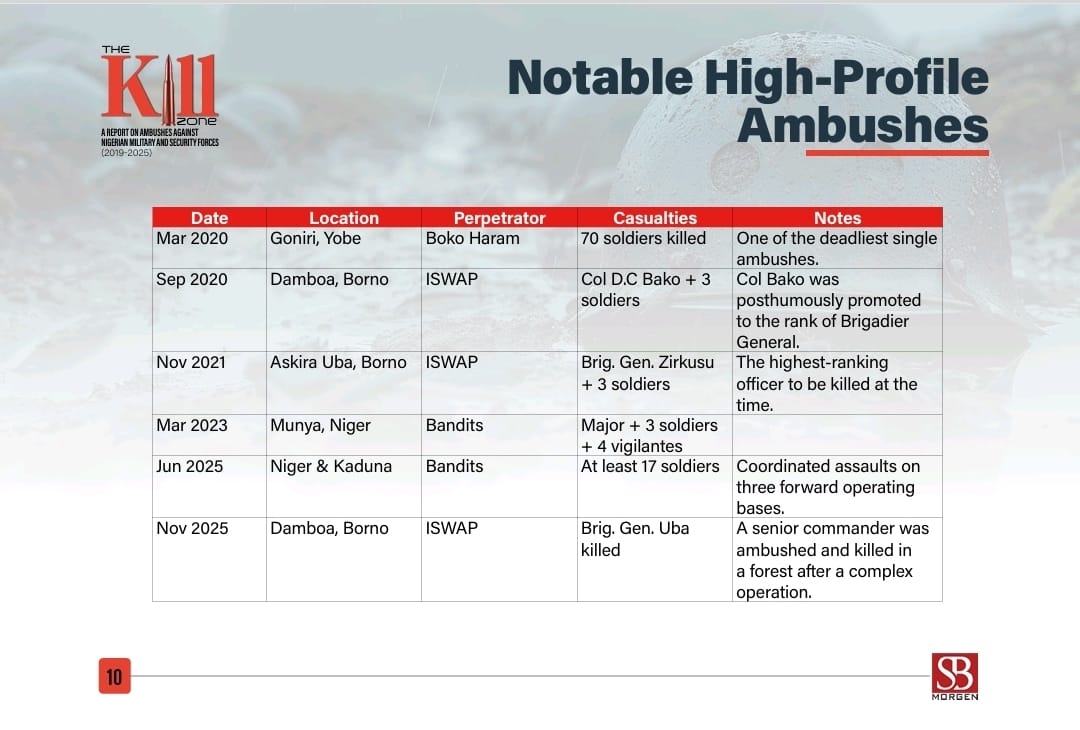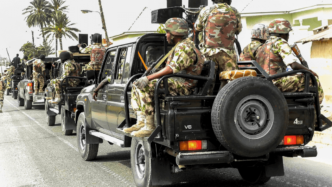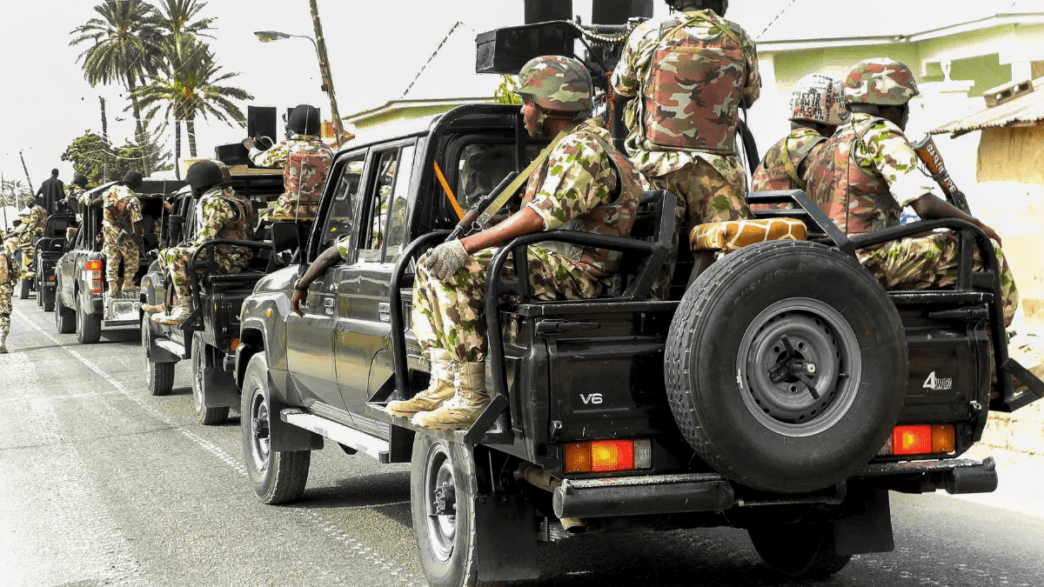A persistent and sophisticated campaign of ambushes by terrorists and criminal groups resulted in the deaths of at least 454 Nigerian soldiers between 2019 and November 2025, according to a new report from SBM Intelligence.
The analysis, based on data up to November 18, 2025, reveals a complex, dual-front insurgency characterised by rising sophistication, tactical evolution, and deep-seated systemic challenges within the military.
The conflict has devolved into a protracted war of attrition, severely overstretching security forces deployed across two-thirds of the country, with significant further casualties recorded among police, Civilian Joint Task Force (CJTF) members, and other security personnel.
Ambushes are heavily concentrated in two main regions, driven by distinct perpetrators. Borno State remains the crisis epicentre, accounting for over 60% of all recorded incidents in the Northeast.
The primary actors here are Boko Haram (JAS) and the Islamic State West Africa Province (ISWAP).
ISWAP has demonstrated ruthless tactical sophistication, employing improvised explosive devices (IEDs) and, increasingly, explosive-rigged commercial drones, alongside coordinated assaults aimed at isolating the military’s fortified “supercamps” by destroying key infrastructure.

The severity of this threat was starkly illustrated by the deaths of high-ranking officers, including Brigadier-General Dzarma Zirkusu in November 2021 and Brigadier-General Uba in November 2025, both killed in complex Borno ambushes.
Simultaneously, the Northwest—particularly Zamfara and Katsina states—is dominated by criminal gangs commonly referred to as bandits. These groups, primarily focused on mass kidnappings for ransom, also pose a direct threat to security forces.
Their tactics include calculated, multi-stage ambushes where one unit attacks a camp to draw a response, while others lie in wait to ambush reinforcements. This calculated approach resulted in devastating attacks, such as the single March 2023 ambush in Zamfara State that killed 51 vigilante members.
Beyond these primary actors, violence linked to secessionist groups like IPOB and various ethnic militias has also contributed to ambushes of security personnel in the South-South and Southeast regions.
The tactics employed by insurgent and armed groups have demonstrated a marked evolution in sophistication over the period. Between 2019 and 2020, there was a significant increase in the use of IEDs and multi-stage ambushes. This shifted between 2021 and 2022 to direct assaults on the Nigerian military’s “super camps” and forward operating bases.
From 2023 through to 2025, a clear trend emerged toward highly targeted ambushes aimed at high-ranking officers and critical security convoys, often incorporating commercial drones for surveillance and kinetic attacks, and coordinated efforts to sever military access routes.
In response, the Nigerian military’s adoption of the “super camp” strategy, intended to consolidate resources, has proven to be a paradox.

While offering some protection, consolidation has ceded control of vast rural areas to insurgents and transformed the camps themselves into high-value, isolated targets.
The military has endeavoured to improve air-ground coordination and increase reliance on the CJTF and local vigilante groups, but these auxiliary forces have subsequently suffered significant casualties.
Operational effectiveness is further hampered by persistent systemic challenges.
The military grapples with inadequate equipment, including a shortage of mine-resistant ambush-protected vehicles, despite integrating some locally produced and Chinese-made MRAPs.
Morale is frequently low due to prolonged deployments, infrequent rotations, and welfare deficiencies. Critical intelligence gaps continue to lead to preventable losses, compounded by internal issues such as corruption and the embezzlement of funds earmarked for equipment.
Furthermore, the deterioration of regional cooperation—notably following Niger’s withdrawal and Chad’s reduced participation in the MNJTF—has created operational vacuums along Nigeria’s borders that are readily exploited for sanctuary and supply by militant groups.
In conclusion, the sustained and adaptive insurgency underscores the critical need for a fundamental strategic review.
The report recommends immediate action to improve intelligence, surveillance, and reconnaissance capabilities; enhance mobility and protection for units; integrate local defence groups more effectively; address troop morale and institutional integrity; and urgently reinvigorate regional security cooperation to close operational vacuums.
Without these comprehensive changes, the trajectory of violence remains deeply concerning, threatening Nigeria’s long-term stability.
Credit: SBM Intelligence


 Trending
Trending 

